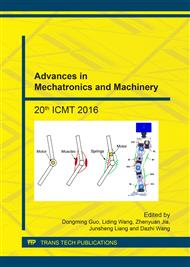p.9
p.15
p.21
p.27
p.33
p.39
p.45
p.51
p.58
Influence of Parallel and Trapezoidal Wick Structures to the Heat Transfer Capability of MHPs
Abstract:
Heat transfer capability of micro heat pipe (MHP) is relied on the thermal resistance of material, the specific phase change latent heat of working fluid, and the pattern of micro structures which is served as wick. In this paper, parallel and trapezoidal micro Cu structures were designed and fabricated by UV-LIGA. The capillary pressure and the effective coefficient of heat transfer conductivity of the micro grooves were calculated and results showed that trapezoidal grooves with small dimension in evaporator and large dimension in condenser (forward trapezoidal) have the best performance, because this structure can generate larger capillary force of working fluid and enhance the heat transfer. Two MHPs based on the calculations were fabricated and tested, results demonstrated that forward trapezoidal groove had the lowest equilibrium temperature while the inversed trapezoidal groove had the highest equilibrium temperature, approved the numerical calculation results. When the input power was 10W, the equilibrium temperature of forward trapezoidal, parallel and backward trapezoidal grooved MHP was 67.2 oC, 73.4°C and 89.1 oC, respectively. The forward trapezoidal grooves enlarge the capillary pressure and benefit the heat transfer of MHP.
Info:
Periodical:
Pages:
33-38
Citation:
Online since:
July 2017
Authors:
Keywords:
Price:
Сopyright:
© 2017 Trans Tech Publications Ltd. All Rights Reserved
Share:
Citation:


